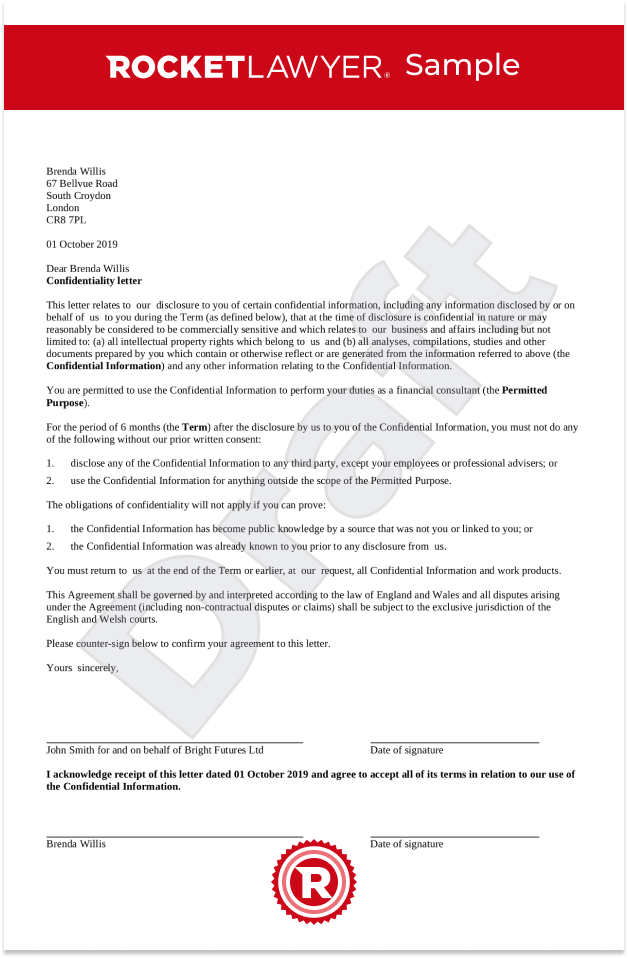Make your Free Letter of Confidentiality
A letter of confidentiality is a basic and straightforward letter that acts as a non-disclosure agreement (NDA). The party disclosing confidential information imposes restrictions as to the use of... ... Read more

How to Make a Letter of Confidentiality
-
What is a letter of confidentiality?
A letter of confidentiality is a basic and straightforward letter that acts as a non-disclosure agreement (NDA). The party disclosing confidential information imposes restrictions as to the use of this confidential information to the party receiving it.
Protect yourself and your business when sharing confidential information with another business or individual. Use this confidentiality letter template to impose restrictions on how your confidential information is used and shared. This basic letter of confidentiality contains everything needed when you need to quickly agree to an NDA and import the value of your confidential information on the other party.
-
When should I use a letter of confidentiality?
Use this letter of confidentiality:
- when you want to share sensitive information with another business (or individual) using the most straightforward type of non-disclosure agreement (NDA)
- when you first start sharing information, or if you frequently do so, and quickly need to agree on an NDA to protect your information
- to impress upon the other party the value of your confidential information
- to impose restrictions on the use and disclosure of the confidential information
-
What is included in a letter of confidentiality?
This letter of confidentiality covers:
- definition of confidential information
- protection of confidential information
- what confidential information can be used for
- who can receive confidential information
- disclosures required by law
- how long the information remains confidential
-
Why do I need a letter of confidentiality?
When disclosing confidential information to a business or an individual, it's vital to protect your business by using either a letter of confidentiality or an NDA agreement. Having a letter of confidentiality signed by the party receiving the confidential information ensures the information you share will be protected and not disclosed.
-
What is the difference between a letter of confidentiality and an NDA?
This letter of confidentiality is a short and simple agreement, and as such does not incorporate the full range of provisions that are generally included in a longer form NDA agreement.
-
What is confidential information?
Almost any type of information can be confidential information and can come in various forms, including written documents and electronic data. You can protect both commercial information and personal information.
-
What are examples of confidential information?
Some examples of confidential information include:
-
trade secrets
-
client information
-
patents and product designs
-
databases
-
plans and lists
-
recipes and drawings
-
-
How does a letter of confidentiality protect confidential information?
The letter of confidentiality prevents the party receiving confidential information from disclosing it and using it for anything outside the scope of the permitted purpose.
-
Are there any exceptions to the restrictions imposed by the letter?
The obligations of confidentiality should not apply if:
- the confidential information has become public knowledge, or
- the confidential information was already known to the receiving party prior to its disclosure.
-
How long should the information remain confidential for?
The information being shared will probably only need to remain confidential for a limited period and it is preferable to set out this period in the letter. How long depends on the sort of information being shared and why it's being shared. 6 months, 1 year or 2 years are reasonable periods of time.